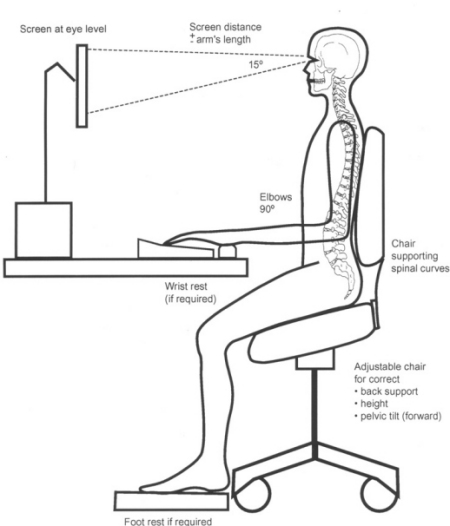Back pain is a common problem, with an estimated 70% of people likely to suffer from it. Back pain can be simply avoided by adopting correct sitting postures.
Excruciating back pain is said to set the country back by about £12.3 billion annually, affect work productivity of about 25% of people who suffer from it and more than half the number of people in the 18-34 age bracket are likely to suffer from back pain. These figures were derived from a recent research, showing just how seriously an avoidable problem such as back pains can escalate.

Backcare’s Sean McDougall explained that back pain is experienced most by the culture of sitting still. “We start sitting on chairs for six hours a day at school,” says McDougall “and that continues when we start work. We sit at desks, eat lunch there, and then go home and watch telly,” he added.
Having adopted the sitting still culture, more people are suffering from back pain well before their reach their 30s. McDougal explains that people used to walk to work, play football during the weekends and take a few nights off to go dancing. This was during the pre-technology age, when back aches were associated with middle aged people, not young adults.
When sitting, about two thirds of the body’s weight rests on, the coccyx, located at the base of the spine. Although the pelvic floor and stomach muscles offer support, they can only do so much. This leads to slouching, which is an incorrect sitting posture. However, we can’t say that the solution to avoiding back pain would be to simply stop sitting; the solution is to adopt correct sitting postures.
One option is to exercise the 30-30 rule; take 30 second breaks from sitting after every 30 minutes. Your body will be able to recover during these breaks, but this is not necessarily a cure to back pain. To make sure that you go through with the 30-30 rule, place some of the items you regularly use out of reach compelling you to stand up and get the items when needed.
Here is a list of seven tips we came up with to help you adopt correct sitting postures
- Get a good chair – in an office environment, it would be best to go for a star shaped five-legged chair. The chair should be comfortable enough to allow free movement. An adjustable chair would be tremendously helpful, because you can adjust it according to your posture requirements. Office chairs can be quite expensive and in the case of your home office you could go for Swiss balls, which transfer weight to your thighs from your core.
- Do not slump when sitting – try and make sure that your spine is fairly neutral when sitting down. This ensures that your weight rests on the seat as opposed to the base of your spine. Get a chair which offers lumbar support or alternatively get a portable lumbar support.
- A correct sitting posture would zee your thighs resting in proportionate angles to the body. A gap should also remain between the back of the knees and the front of the seat. This will help you maintain a natural curve at the base of the spine.
- Use a foot rest if need be, to ensure that your feet stay firmly on the ground.
- Adjust your computer’s screen to eye level and at an arm’s length. This ensures that you avoid bending your neck, and you should also avoid hunching by moving your keyboard closer.
- The computer mouse should be closest to the body and a wrist rest comes in handy for added comfort.
- It is also important to place the keyboard in front of you, with about a 10 to 15 cm gap left for your wrists. The gap will help you rest your arms every often after typing for prolonged periods. Also keep your shoulders proportionate to your shoulders and when typing keep your wrists straight.














